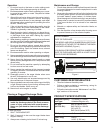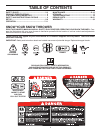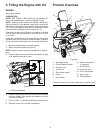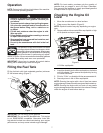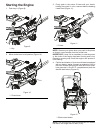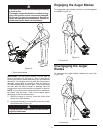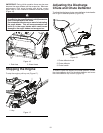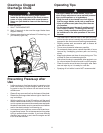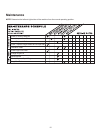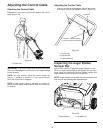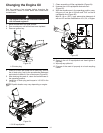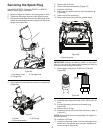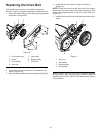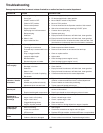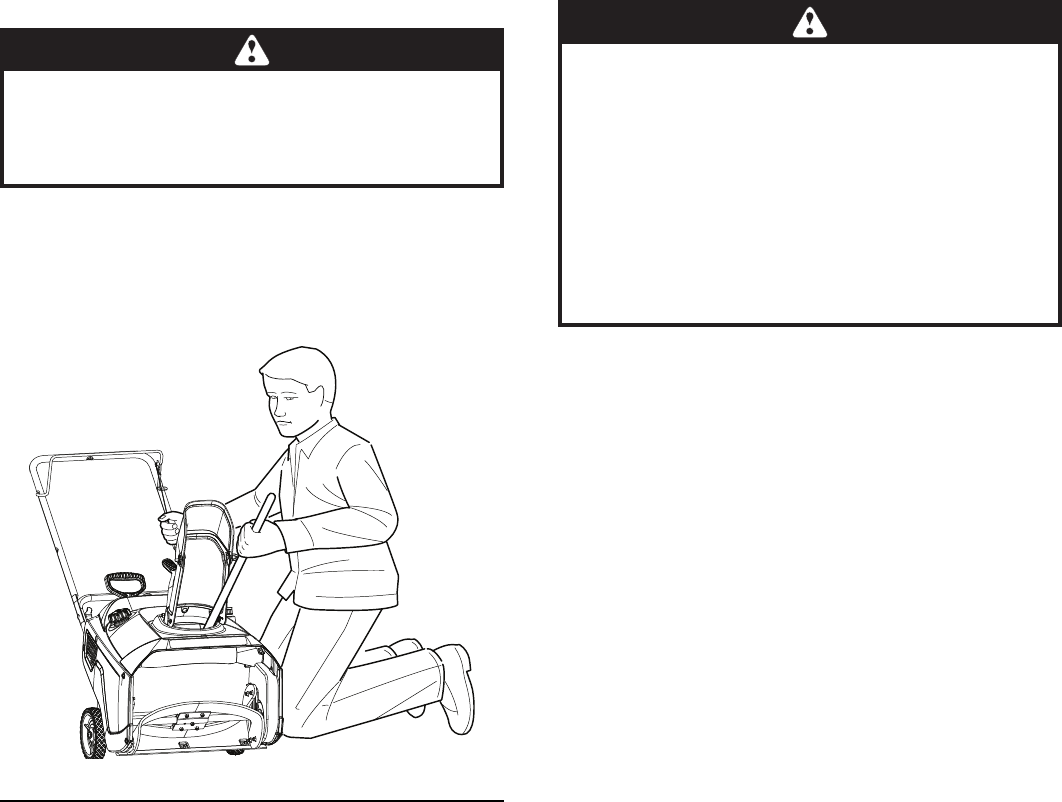
11
Clearing a Clogged
Discharge Chute
Preventing Freeze-up after
Use
• Let the engine run for a few minutes to prevent moving
parts from freezing. Stop the engine, wait for all mov-
ing parts to stop, and remove ice and snow from the
snowthrower.
• Clean off any snow and ice from the base of the chute.
• Rotate the discharge chute left and right to free it from
any ice buildup.
• With the ignition key in the Off position, pull the recoil
starter handle several times or connect the electrical
cord to a power source and the snowthrower and push
the electric start button once to prevent the recoil starter
and/or the electric starter from freezing up.
• In snowy and cold conditions, some controls and mov-
ing parts may freeze. Do not use excessive force when
trying to operate frozen controls. If you have difficulty
operating any control or part, start the engine and let
it run for a few minutes.
Hand contact with the rotating auger blades
inside the discharge chute is the most common
cause of injury associated with snow throwers.
Never use your hand to clean out the discharge
chute.
To clear the chute:
1. SHUT THE ENGINE OFF!
2. Wait 10 seconds to be sure the auger blades have
stopped rotating.
3. Always use a clearing tool at least 15 inches long, not
your hands (Figure 19).
Figure 19
Operating Tips
The auger blades can throw stones, toys, and
other foreign objects and cause serious personal
injury to the operator or to bystanders.
• Keep the area to be cleared free of all objects
that the auger blades could pick up and throw.
• Keep all children and pets away from the area
of operation.
• Do not operate snow thrower if weather condi-
tions im pair visibility. Throwing snow dur ing
a heavy, windy snowstorm can blind you and
be hazardous to the safe operation of the snow
thrower.
• The best time to remove snow is the early morning.
At this time the snow is usually dry and has not been
exposed to the direct sun and warming tem per a tures.
• Slightly overlap each successive path to ensure all
snow will be removed.
• Throw snow downwind whenever possible.
• For extremely heavy snow, re duce the width of snow
removal by over lap ping previous path and moving
slowly.
• Keep engine clean and clear of snow during use. This
will help air flow and extend engine life.
• After snow-throwing is completed, allow engine to run
for a few minutes to melt snow and ice off the engine.
• Clean the entire snow thrower thoroughly after each
use and wipe dry so it is ready for next use.
• Spraying off unit with a hose is NOT recommended.



